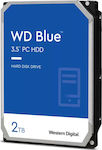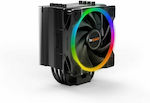Purchase from abroad at a price of $586 MSRP.
Installation on Aorus Tachyon MOBO.
Installation of the liquid freezer ii 280 cooler (due to midi tower).
Installation of the thermal grizzle CPU contact frame (known issue on z690/790 with the `12/13th).
Thermal paste: thermal grizzle extreme.
After many hours of aida64, cinebench testing,
My conclusions are as follows:
With the overclocking options provided by each motherboard (in my case, Gigabyte's 1-click 6GHz BIOS option), the CPU will experience thermal throttling at 100 degrees Celsius no matter what. By keeping the power saving options in the BIOS, you will have low idle and mid-usage temperatures (35-40 idle, 50-65 mid-usage) at 0.85-0.98v, prolonging the lifespan of the paste and CPU. This results in decent performance in rendering/gaming.
For overclockers, by disabling power savings/turbo/auto OC and setting the clocks and BLCK with medium/high LLC, you can reach around 6.1-6.3GHz (referring to the 2 p-cores) with voltages ranging from 1.286-1.450v and a stable TDP of 380 watts (with an average score of 41-42k in cinebench). Those who want a little more without dealing with the BIOS can use XTU to set a stable 6.0GHz, as shown in the photo.
Yes, it is currently the "fastest" CPU (2% faster than the 13900), but in my opinion, it is not worth its price ($860) just to achieve a score of 41-42k in cinebench. And when we say "fastest," what do we mean in the end? In games, it performs slightly worse than a 7800x3d by 10-15% (check Linus). You will see a small difference in FPS, approximately 5%, compared to a 13700k (countless videos on YouTube), but the price is 20% higher and there are other factors at play, such as your RAM's XMP (7200 in my case) and the capabilities of your motherboard, etc.
It is a processor purely for work, such as video editing/rendering/sound production, etc. For gaming, I would go for an AMD 7800x3d, which performs better than both the 13900ks and the 7950x3d.
PS:
****It is very important to know that if the processor is paired with a good motherboard, there will be 2-3 options within the BIOS that strictly concern its power limits. An example of these options is Intel POR, Intel POR enhance, Enabled, Auto, etc. In simple terms, what this means is that if you set it to INTEL POR, the CPU will have a power limit of 253 watts, which is also Intel's guidance (safe), resulting in lower scores in benchmarks (gaming is somewhat difficult due to single-thread performance) as it reaches 5.5GHz and stops at 253 watts (TDP). With the disabled or POR enhance option (the motherboard overrides), it is up to your motherboard to determine how much extra power will be supplied to the CPU (in my case, I have seen up to 402 watts), which means more power, higher frequency (default turbo at 5.8GHz, 6GHz with thermal velocity, 6GHz+ with overclocking), and better performance. However, the CPU will reach 100 degrees Celsius directly and undergo thermal throttling in most cases. This option is enabled by default, so you can see why everyone complains about 100 degrees Celsius for no reason (it's because of this).





























